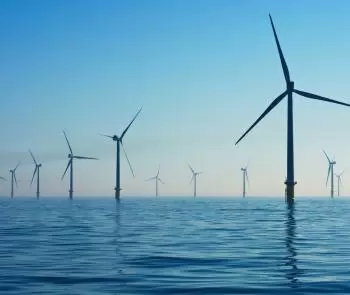
Clean energy is the way we refer to natural sources of energy that do not produce toxic waste or greenhouse gases. Most clean energy comes from renewable energy resources. Renewable energy is energy generated using any source that can be replaced or replenished.
During the early industrial revolution, the use of coal in industry increased exponentially year after year. The ease of extraction, the calorific power and the versatility of this fuel quickly made it the main energy source in the world.
However, over the years, we have observed the environmental impact of fossil fuels. For this reason, clean and renewable energies have begun to be promoted to offset the adverse effects on the environment.
Green energy is clean energy but excludes non-renewable sources.
What are the different types of clean energy sources?
There are several types of clean energy. Among them are:
-
Solar energy: It is an inexhaustible source of energy that comes from the Sun. It can be used to heat water, generate electricity and also for cooking.
-
Wind power: This energy is produced from the wind's kinetic energy. It can be used to generate electricity using wind turbines.
-
Hydraulic energy: It is the one that is produced from the movement of water. It can also be used to generate electricity through hydroelectric power plants.
-
Geothermal energy: Geothermal energy is produced from the heat extracted from the Earth's interior. This type of renewable energy is used for the generation of electrical energy in geothermal power plants and to supply heat to homes and buildings.
-
Biomass energy: Biomass is an organic material that can be used as fuel. Burning it produces energy that can be used for heating or generating electricity.
-
Tidal energy: The energy produced from waves and tides can also be used for electricity generation.
-
Hydrogen energy: Hydrogen is a gas that can be used as fuel. When burned, only water is produced as waste.
-
Nuclear energy: atomic energy is a powerful source of heat that is used in nuclear power plants to produce electricity. The fuel used is uranium, which is not a renewable source, but does not generate greenhouse gas emissions, so it is considered clean energy. The first nuclear reactor was produced in the United States during the Second World War.
What are clean energies for?
Clean energies are used to obtain electricity and thermal energy in a sustainable way. That is, by reducing the consumption of fossil energy, they help to reduce air and water pollution, as well as the greenhouse effect.
On the other hand, they can also help improve people's quality of life by providing a cleaner and safer source of energy.
Among the main utilities of clean energy, we highlight the following:
-
First, reduce the consumption of fossil fuels with an alternative energy source.
-
Improve health: by not emitting greenhouse gases, this type of energy contributes to maintaining a good quality of the air we breathe.
-
Reduce the cost of energy: Clean energy can be more efficient and therefore cheaper to operate.
-
Improve the environment: Clean energy can also help protect natural resources without interfering with the development of other animal and plant species.
What are the pros and cons of using clean energy?
Below are some pros and cons of using clean energy.
Pros:
-
A renewable energy source such as solar or wind is inexhaustible. On the contrary, the mining resources of coal, oil and natural gas are limited, which means that over the years the price will increase until it is exhausted.
-
Clean energies do not produce toxic waste such as carbon dioxide, sulfites and other polluting particles.
-
They help reduce greenhouse gas emissions, which contributes to combating global warming and climate change.
Cons:
-
Solar panels and windmills can be expensive to install.
-
Many types of clean energy such as solar or hydraulic require space to install the devices, causing a visual and sometimes environmental impact.
-
The production of wind and solar energy depends on the weather, so the output depends on the wind, cloudy days or solar hours depending on the season of the year.
Examples of clean energy
Here are some examples of clean energy that we can observe on a day-to-day basis:
-
The installation of photovoltaic panels on the roofs.
-
A hydroelectric power station that transforms the potential energy of water into electricity.
-
Windmills installed in the mountains to convert wind energy into electrical energy.
-
Solar powered calculators.
-
Solar panels used for heating swimming pools.
-
Plant photosynthesis is a way of harnessing solar energy.
-
Nuclear power plants are large power plants that use nuclear fuel.
-
The houses that build geothermal wells to benefit from the geothermal heat inside the layers of the Earth.